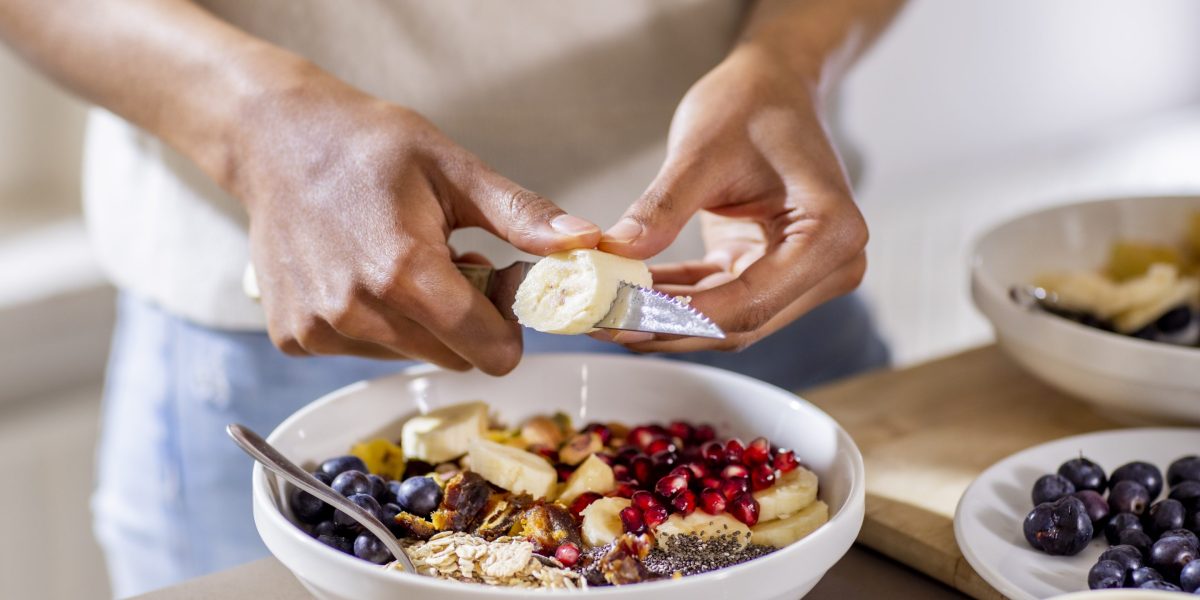
The company claims to have helped more than four million people lose weight and it’s tagline is “Go Lose Weight, Go Look Great, Go Love Life.” It all adds up to the “GOLO” diet, created in 2009 by the GOLO company. It’s gaining traction among those in search of weight loss, but there is plenty you should understand about this plan before considering it.
While claiming to “eliminate starvation dieting for good,” the GOLO diet is restrictive—unhealthfully so. A typical day on the diet plan will see you eating between 1,300 and 1,800 calories, depending on gender. “That’s fewer calories than an adult needs just for daily living,” says nutritionist Maddie Pasquariello, R.D., founder at East Coast Health. “When you add exercise into the equation, then of course you’re going to drop weight quickly.”
But such an approach is unsustainable, and will put your body into a fight or flight mode, says Pasquariello. It denies your body calories needed for immunity, digestion, skin health, and organ systems. Even your brain won’t get what it needs for optimal functioning from so few calories.
Additionally, to access the plan, GOLO requires you purchase its own “proprietary supplement,” which can run up to $120 for a 90-day supply. It also brings with it a host of buzzworthy claims.
“They make sweeping claims that the ingredients in this supplement will control cravings, reduce stress and anxiety, increase energy, support healthy metabolism, balance your hormones, and more,” says Pasquariello. “Ultimately, none of this really means much: the supplement industry is vastly unregulated in the United States, and the claims being made by supplement companies at large are usually just that.”
Pasquariello points out that despite the GOLO Diet claims, “there are few, if any foods that can actually change our metabolism in a meaningful way, and the same is true for ‘balancing hormones.” For most people, unless facing a significant disease state or in critical care, hormones are probably in balance, she adds.
A few things GOLO does get right are most of the foods on its “list.” Whole grains, legumes, vegetables, fruits, nuts and seafoods are all generally good bets. It also advocates limiting processed meats like hot dogs, refined carbohydrates like white bread or white rice, and processed foods. Still, with an emphasis on animal proteins and no guidance on the types of seafood recommended, Pasquariello has some concerns.
The GOLO website also lists several “studies” as proof of its validity. But a read between the lines reveals the research was funded by the company and/or are pilot studies—which scientists undertake to demonstrate need for actual research. They are small and exploratory in nature, and cannot prove a claim.
What to aim for instead
While diets like GOLO continue to enjoy popularity thanks to their quick-fix appeal, a sounder approach is getting back in charge of what and how you eat. “When we were kids, we knew intuitively what we needed,” says Pam Moore, an intuitive eating coach. “Diet culture has trained that out of us.”
Moore says that, when focusing on calories, macro-nutrients and “off limits” foods, people can lose touch with their bodies. “You might not even recognize when you need food,” she says. “You might be jumpy, irritable, or tired, and not realize it’s because you’re hungry.”
To relearn how to tap into your body’s needs, start by eating three meals and a snack again if it’s something you’ve strayed from, says Moore. “People sometimes skip breakfast, then make up for it later in the day,” she explains. “Then they beat themselves up for being ‘out of control.’ Don’t let four or five hours go by without eating.”
Aim for foods that satiate, too, and don’t put certain foods on the restricted list. Moore cites having frozen yogurt instead of ice cream, for instance. “You might actually eat too much of the yogurt, end up unsatisfied, and wish you had the ice cream instead,” she says. “Have faith that if you allow yourself the foods you consider wrong, the novelty will wear off.”
Likewise dig into why you have various eating beliefs, and whether or not they’re serving you. “We’ve all got a lifetime of diet culture messaging,” says Moore. “But we shouldn’t conflate weight with health. Measurements like BMI and weight are not accurate measures of health.”
There are, of course, limits to what constitutes a healthy body and body composition, but years of diet culture have not solved the problem, and have in turn created many others. There is no such thing as a quick fix or silver bullet to healthy eating and weight loss.
If you are experiencing the symptoms GOLO claims to cure, like low energy, chronic stress or a preoccupation with food or exercise, consult with your doctor, says Pasquariello. “There’s a reason you’ll never see RDs promoting supplements as a means to an end,” she says. “At best, programs like this waste your money, and at worst, they can create disordered eating.”
Source: fortune.com




















Add comment